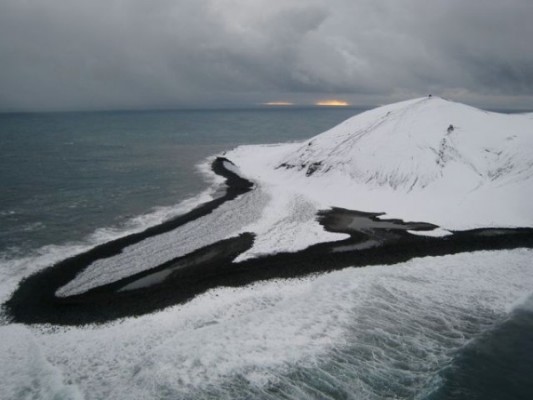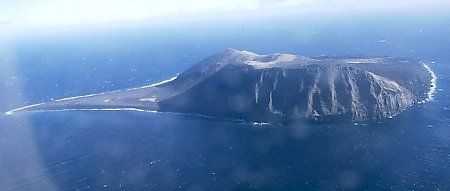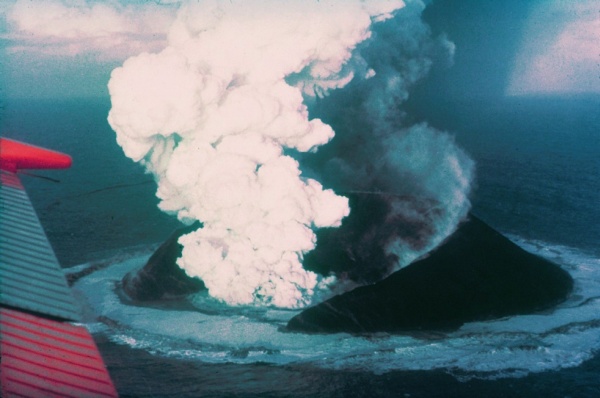Fifty years and fifteen days ago, the island of Surtsey emerged from the sea off the southern coast of Iceland.
On November 14, 1963 the cook on the trawler Ísleifur II saw smoke on the water. The captain motored over to see if it was a ship on fire or a volcano (in Iceland you know to include “volcano” on your list) and yes, it was a volcano.
From a spot of smoke it grew quickly into an island. Here it is erupting in 1963.
Named for a Norse fire giant, Surtsey continued to erupt for the next three and a half years until it grew even larger than it is today. The island is literally losing ground. It was 1 square mile at its maximum; now it’s only half. The ocean immediately took away the loose rocks leaving behind hard volcanic cliffs. They will eventually erode as well, it’ll just take longer.
For now Surtsey has settled down to a bland, quiet existence as a UNESCO World Heritage site and one of the most studied places on earth. What began as barren hot rock now hosts at least 69 plant species and 15 species of nesting birds (nice cliffs!). Even spiders have drifted in and set up housekeeping.
Two unexpected plants arrived with human visitors and had to be eradicated lest they became invasive. A tomato plant grew from a seed deposited by diarrhea (yes, it happens) and some boys planted potatoes. Wrong! Those had to go.
Right now Surtsey is probably under snow as in this photo from January 2009.

Very quiet, but she has an amazing history. See great photos of her fiery birth and read more of her history, including the bizarre French territorial dispute, at the VolcanoCafé blog.
(photos of Surtsey from Wikimedia Commons. Click on the images to see the original)

